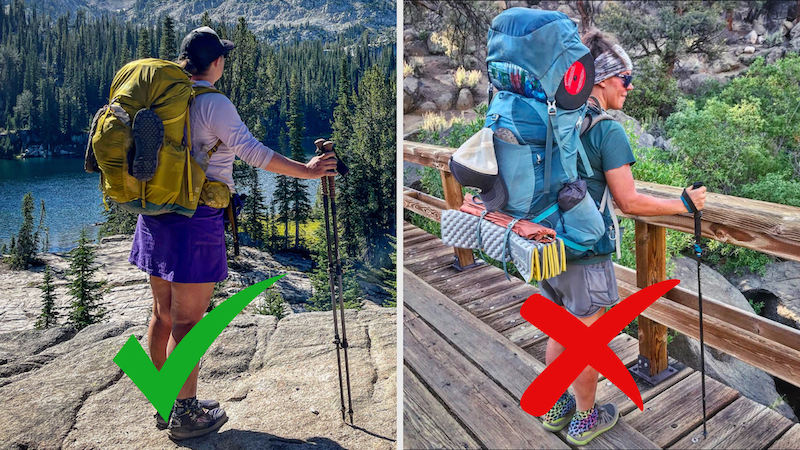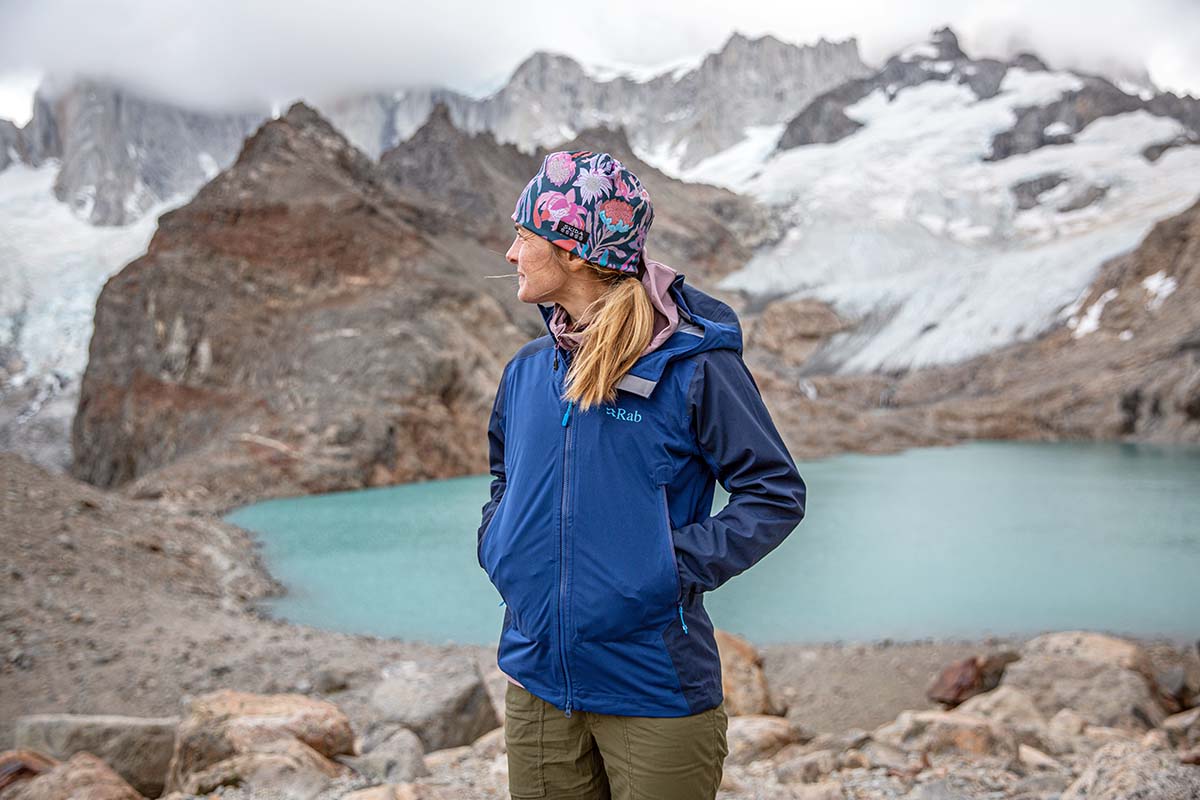Necessary Tips for Selecting the Finest Hiking Gear for Your Exterior Experiences
Choosing the best walking gear can be a complex procedure, needing mindful consideration of various elements, from convenience and fit to performance. One need to consider the duration and trouble of the walk, the terrain, and climate problems, all of which affect the selection of backpack, footwear, garments, and essential tools.
Recognizing the Standard Necessities of Hiking Gear
Travelling via the wild needs greater than simply a solid will and a feeling of adventure. It demands vital equipment to ensure safety and security and convenience. The basic necessities of hiking gear encompass a vast array of products. A knapsack is extremely important, supplying space for provisions and tools. Garments, also, is essential, needing to be durable and weather-appropriate. Navigation devices like a compass and map, or modern-day GPS devices, can avoid disorientation. Survival tools such as a multi-tool, fire starter and first help package are additionally essential. Remember, the equipment's weight and dimension must be workable for the hiker. While boots are important, they'll be reviewed in the next area, "Considerations in Selecting the Right Hiking Boots".
Factors to consider in Picking the Right Hiking Boots
While the best gear is crucial for an effective hike, selecting the suitable boots is particularly crucial. Hiking boots offer the needed assistance, protection, and grip when travelling via numerous surfaces. The key variables to think about when selecting hiking boots include the type of walking, the boots' material, and the fit.
The Value of a Properly Equipped Knapsack
A well-fitted knapsack is a critical part in treking equipment, influencing both convenience and performance. It is needed to comprehend various backpack sizes and the balance in between convenience and lugging capability. Discovering to change the backpack for an ideal fit can significantly enhance the total walking experience.
Comprehending Knapsack Dimensions
Making certain the best fit of your hiking knapsack is not practically convenience, yet likewise about safety and security. Knapsack sizes are normally provided in liters, mirroring the volume they can hold. Smaller packs, ranging from 20 to 30 liters, appropriate for light, day hikes. For multi-day walks or overnight journeys, think about a backpack in the 40 to 70-liter array. The largest packs, 70 litres and above, are scheduled for extended backpacking journeys or winter season trips requiring added gear. Recognizing the size of the knapsack is important, but one have to also consider their body dimension. To achieve a correct fit, the backpack's size need to correlate with the user's torso size, not their overall height.
Comfort Vs Lugging Capacity
Balancing convenience and lugging capacity highlights the relevance of a correctly fitted knapsack. The exterior enthusiast should comprehend that a knapsack's value is not just in its volume however also just how comfortably it fits the tons. A massive pack may be tempting for its spaciousness, however an inadequate fit can lead to discomfort and even injury. On the other hand, a well-fitted, smaller sized knapsack may use even more comfort but restrict bring ability. The method depends on finding a backpack that marries both aspects perfectly. It's important to examine individual demands, planned tons, and the nature of the path in advance. The ideal knapsack will certainly supply an equilibrium, making certain convenience on the routes without endangering the capacity to bring required gear.
Adjusting for Perfect Fit
Just how does one make sure the ideal fit when selecting a treking backpack? It begins with recognizing that a correctly fitted backpack can make or damage one's outdoor journey. A great fit not only makes sure comfort yet likewise protects against potential injuries. It's view it essential to gauge the torso size, not the height, as knapsack sizes are reliant on this element. When readjusting, the backpack's hip belt need to rest on the hips, sharing the lots with the shoulders. The shoulder straps need to rest conveniently, without triggering any type of pain. Tons lifters, if present, ought to create a 45-degree angle between the knapsack and the shoulders. Lastly, the breast bone strap must be adjusted to assist disperse weight uniformly. Correct fitting is undoubtedly an important aspect of selecting the most effective hiking equipment.
Choosing Ideal Clothing and Layers for Different Environments
While it might look like a daunting task, choosing appropriate apparel and layers for various environments is of paramount significance when preparing a walking. In chillier atmospheres, a walker must go with shielding products such as woollen or artificial layers that catch warmth and wick away moisture. When it comes to warmer environments, breathable, lightweight clothing that offers protection from the sun is a must. Regardless of the climate, you could try here water-resistant outerwear is recommended to shield against unpredictable weather adjustments. Flexible products like an enthusiast or bandana can be used for numerous functions including warmth, sunlight security or even as a makeshift bandage. Eventually, these garments choices should provide convenience, security, and versatility, ensuring a effective and satisfying outside adventure.

Necessary Devices and Devices for Outdoor Expedition
As one browses the wild, specific tools and accessories come to be important. The selection of proper treking footwear sets the structure for a successful journey, while understanding making use of crucial exterior navigation devices can suggest the difference between a stressful challenge and a pleasant walking. Picking weather-resistant apparel is a decision that can substantially influence convenience and safety during outside expedition.

Choosing Proper Treking Shoes
Ever taken into consideration the value of suitable shoes in the success of your hiking journey? Think about attempting on footwear with the socks you plan to hike in for an accurate fit. Breathability is one more function to consider, specifically for lengthy walkings.

Important Exterior Navigation Equipment
Navigating with the wild requires a strong understanding of direction and a trusted set of exterior navigation tools. One of the most important amongst these are a compass and a map. A compass, an ageless navigating tool, is vital for determining direction when sites are vague. Coupled with a topographic map, it provides one the capacity to chart a course successfully. A general practitioner device likewise verifies important, supplying real-time positioning and aiding to mark waypoints. For included safety, hikers must take into consideration a personal locator beacon, which can send an emergency signal to rescue groups. Portable and lightweight, these tools are important in any type of exterior expedition package. Remember, being outfitted with the right navigation tools can make the difference between an unsafe challenge and an effective walk.
Choosing Weather-Resistant Apparel
While having the right devices for navigating can substantially boost the chances of a successful walk, the relevance of proper clothes can not be overstated. Weather-resistant original site attire is an essential thing that can secure hikers versus unforeseeable elements. Such garments involves products that are windproof, water resistant, and breathable to maintain convenience during variants in weather condition. Additionally, they need to be conveniently packable and lightweight for convenience. Layering is a technique typically employed by walkers; starting with a moisture-wicking base layer, a protecting center layer, and a water-proof outer layer. It's additionally important to consider UV-protection, specifically at higher elevations where the sun's rays are stronger. The selection of weather-resistant clothes needs mindful consideration to make certain safety and comfort in the terrific outdoors.
Investing in High Quality Tents and Sleep Solutions for Treking
For a remarkable and comfy hiking experience, purchasing top quality tents and sleep systems is necessary. These items form the foundation of any type of outside experience, giving safety and security and rest after a long day's walking. When choosing a camping tent, durability, weather, and size resistance are essential aspects. The camping tent must withstand extreme conditions and accommodate all walkers pleasantly. Hiking Gear. For rest systems, think about the kind of insulation, weight, and comfort. Choices range from air mattresses to self-inflating pads and closed-cell foam pads. Superior insulation is crucial in chillier climates, while weight is a substantial consideration for long-distance hikes. Picking sensibly guarantees a good evening's sleep, rejuvenating the hiker for the following day's obstacles.
Conclusion
Comfort, fit, and capability are extremely important, beginning with the ideal backpack and footwear, complied with by climate-appropriate clothing. Investing in quality camping tents and sleep systems further guarantees comfort during treking journeys.
One must think about the period and problem of the walk, the surface, and climate problems, all of which affect the choice of knapsack, footwear, apparel, and necessary tools.A well-fitted backpack is a crucial part in treking gear, affecting both convenience and performance.Making certain the right fit of your hiking backpack is not simply regarding comfort, but also about safety.How does one make certain the excellent fit when picking a treking knapsack? The choice of appropriate hiking shoes sets the foundation for an effective trip, while understanding the use of important outdoor navigation tools can mean the distinction in between a pleasant walk and a traumatic ordeal.